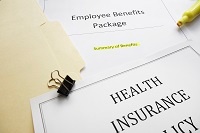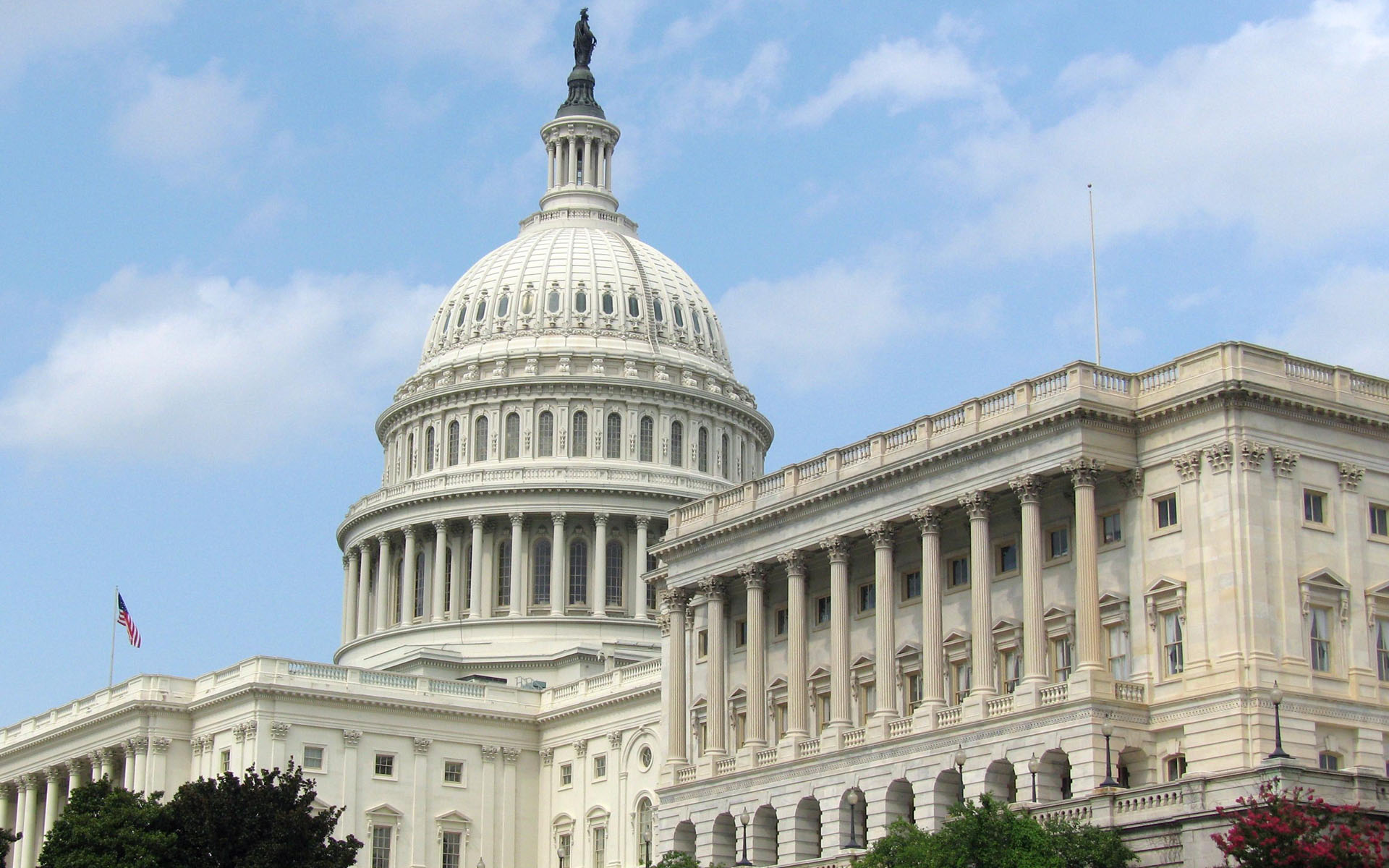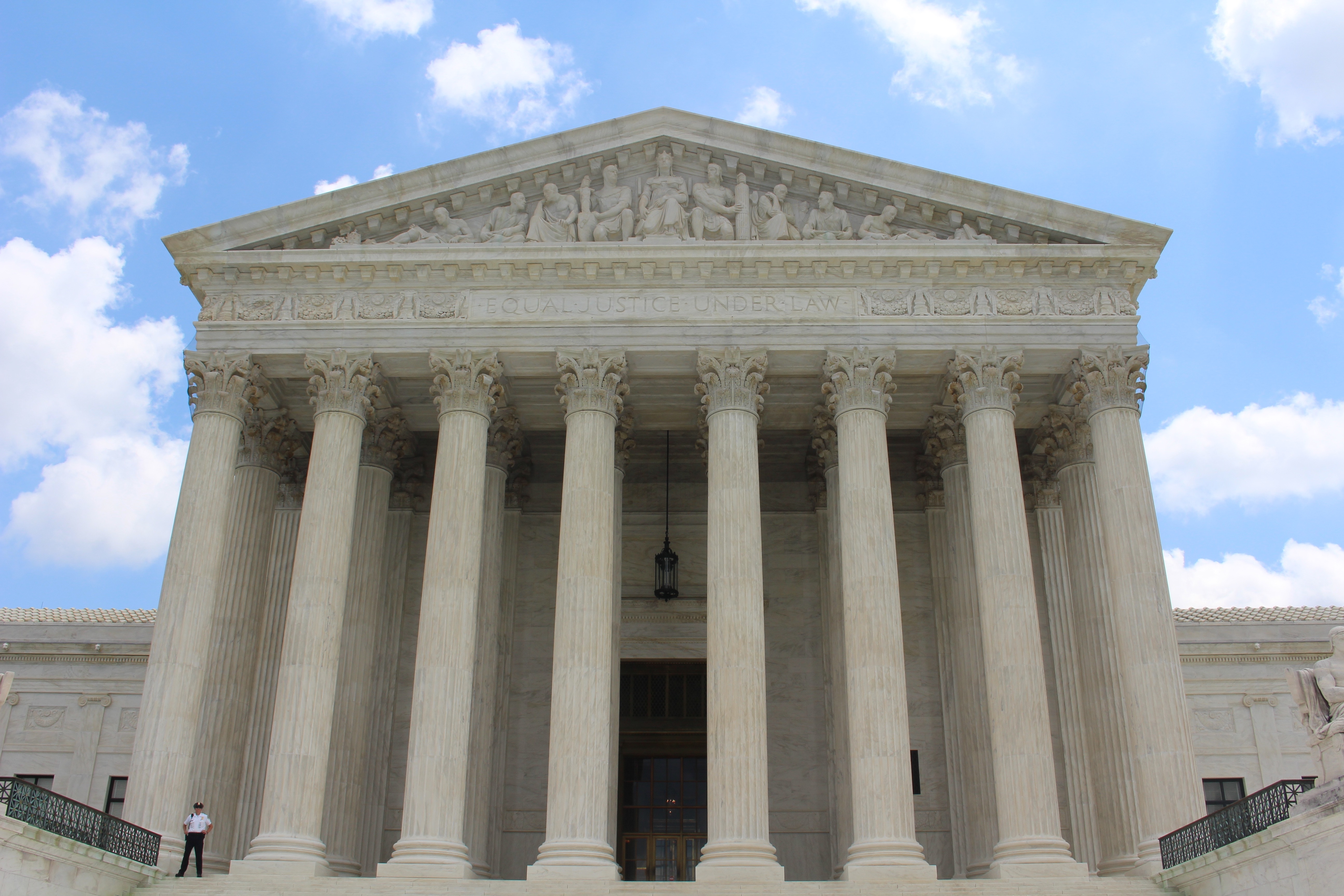
by admin | Dec 28, 2017 | Compliance, ERISA, Group Benefit Plans, IRS
 The U.S. Department of Labor’s Employee Benefits Security Administration (EBSA), the Internal Revenue Service (IRS), and the Pension Benefit Guaranty Corporation (PBGC) released advance informational copies of the 2017 Form 5500 annual return/report and related instructions.
The U.S. Department of Labor’s Employee Benefits Security Administration (EBSA), the Internal Revenue Service (IRS), and the Pension Benefit Guaranty Corporation (PBGC) released advance informational copies of the 2017 Form 5500 annual return/report and related instructions.
Specifically, the instructions highlight the following modifications to the forms, schedules, and instructions:
- IRS-Only Questions. IRS-only questions that filers were not required to complete on the 2016 Form 5500 have been removed from the Form 5500 and Schedules.
- Authorized Service Provider Signatures. The instructions for authorized service provider signatures have been updated to reflect the ability for service providers to sign electronic filings on the plan sponsor and Direct Filing Entity (DFE) lines, where applicable, in addition to signing on behalf of plan administrators on the plan administrator line.
- Administrative Penalties. The instructions have been updated to reflect that the new maximum penalty for a plan administrator who fails or refuses to file a complete or accurate Form 5500 report has been increased to up to $2,097 a day for penalties assessed after January 13, 2017, whose associated violations occurred after November 2, 2015. Because the Federal Civil Penalties Inflation Adjustment Improvements Act of 2015 requires the penalty amount to be adjusted annually after the Form 5500 and its schedules, attachments, and instructions are published for filing, be sure to check for any possible required inflation adjustments of the maximum penalty amount that may have been published in the Federal Register after the instructions have been posted.
- Form 5500-Plan Name Change. Line 4 of the Form 5500 has been changed to provide a field for filers to indicate that the name of the plan has changed. The instructions for line 4 have been updated to reflect the change. The instructions for line 1a have also been updated to advise filers that if the plan changed its name from the prior year filing or filings, complete line 4 to indicate that the plan was previously identified by a different name.
- Filing Exemption for Small Plans. The instructions indicate that for a small unfunded, insured, or combination welfare plan to qualify for the filing exemption, the plan must not be subject to the Form M-1 filing requirements.
Be aware that the advance copies of the 2017 Form 5500 are for informational purposes only and cannot be used to file a 2017 Form 5500 annual return/report.
By Danielle Capilla
Originally Published By United Benefit Advisors

by admin | Dec 21, 2017 | Flexible Spending Accounts, Human Resources, IRS
 As 2017 comes to a close, it’s time to act on the money sitting in your Flexible Spending/Savings Account (FSA). Unlike a Health Savings Account or HSA, pre-taxed funds contributed to an FSA are lost at the end of the year if an employee doesn’t use them, and an employer doesn’t adopt a carryover policy. It’s to your advantage to review the various ways you can make the most out of your FSA by year-end.
As 2017 comes to a close, it’s time to act on the money sitting in your Flexible Spending/Savings Account (FSA). Unlike a Health Savings Account or HSA, pre-taxed funds contributed to an FSA are lost at the end of the year if an employee doesn’t use them, and an employer doesn’t adopt a carryover policy. It’s to your advantage to review the various ways you can make the most out of your FSA by year-end.
Book Those Appointments
One of the first things you should do is get those remaining appointments booked for the year. Most medical/dental/vision facilities book out a couple of months in advance, so it’s key to get in now to use up those funds.
Look for FSA-Approved Everyday Health Care Products
Many drugstores will often advertise FSA-approved products in their pharmacy area, within a flyer, or on their website. These products are usually tagged as “FSA approved”. Many of these products include items that monitor health and wellness – like blood pressure and diabetic monitors – to everyday healthcare products like children’s OTC meds, bandages, contact solution, and certain personal care items. If you need to use the funds up before the end of the year, it’s time to take a trip to your local drugstore and stock up on these items.
Know What’s Considered FSA-Eligible
Over the last several years, the IRS has loosened the guidelines on what is considered eligible under a FSA as more people became concerned about losing the money they put into these plans. There are many items that are considered FSA-eligible as long as a prescription or a doctor’s note is provided or kept on file. Here are a few to consider:
- Acupuncture. Those who suffer from chronic neck or back pain, infertility, depression/anxiety, migraines or any other chronic illness or condition, Eastern medicine may be the way to go. Not only are treatments relatively inexpensive, but this 3,000 year old practice is recognized by the U.S. National Institute of Health and is an eligible FSA expense.
- Dental/Vision Procedures. Dental treatment can be expensive—think orthodontia and implants. While many employers may offer some coverage, it’s a given there will be out-of-pocket costs you’ll incur. And, eye care plans won’t cover the cost of LASIK, but your FSA will. So, if you’ve been wanting to correct your vision without the aid of glasses or contacts, or your needing to get that child braces, using those FSA funds is the way to go.
- Health-boosting Supplements. While you cannot just walk into any health shop and pick up performance-enhancing powder or supplements and pay with your FSA card, your doctor may approve certain supplements and alternative options if they deem it to benefit your health and well-being. A signed doctor’s note will make these an FSA-eligible expense.
- Smoking-cessation and Weight-Loss Programs. If your doctor approves you for one of these programs with a doctor’s note deeming it’s medically necessary to maintain your health, certain program costs can be reimbursed under an FSA.
Talk to Your HR Department
When the IRS loosened guidelines a few years ago, they also made it possible for participants to carry over $500 to the next year. Ask Human Resources if your employer offers this, or if they provide a grace period (March 15 of the following year) to turn in receipts and use up funds. Employers can only adopt one of these two policies though.
Plan for the Coming Year
Analyze the out-of-pocket expenses you incurred this year and make the necessary adjustments to allocate what you believe you’ll need for the coming year. Take advantage of the slightly higher contribution limit for 2018. If your company offers a FSA that covers dependent care, familiarize yourself with those eligible expenses and research whether it would be to your advantage to contribute to as well.
Flexible Spending/Saving Accounts can be a great employee benefit offering tax advantages for employees that have a high-deductible plan or use a lot of medical. As a participant, using the strategies listed above will help you make the most out of your FSA.

by admin | Dec 12, 2017 | ACA, Benefit Management, Compliance, Group Benefit Plans, IRS
 Beginning in 2015, to comply with the Patient Protection and Affordable Care Act (ACA), “large” employers must offer their full-time employees health coverage, or pay one of two employer shared responsibility / play-or-pay penalties. The Internal Revenue Service (IRS) determines the penalty each calendar year after employees have filed their federal tax returns.
Beginning in 2015, to comply with the Patient Protection and Affordable Care Act (ACA), “large” employers must offer their full-time employees health coverage, or pay one of two employer shared responsibility / play-or-pay penalties. The Internal Revenue Service (IRS) determines the penalty each calendar year after employees have filed their federal tax returns.
In November 2017, the IRS indicated on its “Questions and Answers on Employer Shared Responsibility Provisions Under the Affordable Care Act” webpage that, in late 2017, it plans to issue Letter 226J to inform large employers of their potential liability for an employer shared responsibility payment for the 2015 calendar year.
The IRS’ determination of an employer’s liability and potential payment is based on information reported to the IRS on Forms 1094-C and 1095-C and information about the employer’s full-time employees that were received the premium tax credit.
The IRS will issue Letter 226J if it determines that, for at least one month in the year, one or more of a large employer’s full-time employees was enrolled in a qualified health plan for which a premium tax credit was allowed (and the employer did not qualify for an affordability safe harbor or other relief for the employee).
Letter 226J will include:
- A brief explanation of Section 4980H, the employer shared responsibility regulations
- An employer shared responsibility payment summary table that includes a monthly itemization of the proposed payment and whether the liability falls under Section 4980H(a) (the “A” or “No Offer” Penalty) or Section 4980H(b) (the “B” or “Inadequate Coverage” Penalty) or neither section
- A payment summary table explanation
- An employer shared responsibility response form (Form 14764 “ESRP Response”)
- An employee premium tax credit list (Form 14765 “Employee Premium Tax Credit (PTC) List”) which lists, by month, the employer’s assessable full-time employees and the indicator codes, if any, the employer reported on lines 14 and 16 of each assessable full-time employee’s Form 1095-C
- Actions the employer should take if it agrees or disagrees with Letter 226J’s proposed employer shared responsibility payment
- Actions the IRS will take if the employer does not timely respond to Letter 226J
- The date by which the employer should respond to Letter 226J, which will generally be 30 days from the date of the letter
- The name and contact information of the IRS employee to contact with questions about the letter
If an employer responds to Letter 226J, then the IRS will acknowledge the response with Letter 227 to describe further actions that the employer can take.
After receiving Letter 227, if the employer disagrees with the proposed or revised shared employer responsibility payment, the employer may request a pre-assessment conference with the IRS Office of Appeals. The employer must request the conference by the response date listed within Letter 227, which will be generally 30 days from the date of the letter.
If the employer does not respond to either Letter 226J or Letter 227, then the IRS will assess the proposed employer shared responsibility payment amount and issue a notice and demand for payment on Notice CP 220J.
Notice CP 220J will include a summary of the employer shared responsibility payment, payments made, credits applied, and the balance due, if any. If a balance is due, Notice CP 220J will instruct an employer how to make payment. For payment options, such as an installment agreement, employers should refer to Publication 594 “The IRS Collection Process.”
Employers are not required to make payment before receiving a notice and demand for payment.
The ACA prohibits employers from making an adverse employment action against an employee because the employee received a tax credit or subsidy. To avoid allegations of retaliation, as a best practice, employers who receive a Letter 226J should separate their employer shared responsibility penalty assessment correspondence from their human resources department and employees who have authority to make employment actions.
By Danielle Capilla
Originally Published By United Benefit Advisors

by admin | Dec 5, 2017 | Employee Benefits, Flexible Spending Accounts, IRS
 On November 2, 2017, House Republicans introduced a tax reform bill (H.R.1-115th Congress) called the “Tax Cuts and Jobs Act” that, if passed, would impact multiple aspects of the tax code. Many of these changes relate to employee benefit plans, particularly in relation to certain fringe benefits.
On November 2, 2017, House Republicans introduced a tax reform bill (H.R.1-115th Congress) called the “Tax Cuts and Jobs Act” that, if passed, would impact multiple aspects of the tax code. Many of these changes relate to employee benefit plans, particularly in relation to certain fringe benefits.
Dependent Care Accounts
A dependent care flexible spending account (DCFSA) is a pre-tax benefit account used to pay for eligible dependent care services. The IRS determines which expenses are eligible for reimbursement and these expenses are defined by Internal Revenue Code section 129 and the employer’s plan. Eligible DCFSA expenses include costs for adult day care centers, before and after school programs, child care, nannies, preschool, and summer day camp. Day nursing care, nursing home care, tuition for kindergarten and above, food expenses, and overnight camp are ineligible expenses. The employer determines the minimum election amount and the IRS determines the maximum election amount. The IRS sets the following annual contribution limits for a DCFSA:
- $2,500 per year for a married employee who files a separate tax return
- $5,000 per year for a married employee who files a joint tax return
- $5,000 per year for the head of household
- $5,000 per year for a single employee
The original version of the tax reform bill completely eliminated dependent care accounts. It is now reported that Representative Kevin Brady (R-Texas) has added an amendment to the bill that reverses the immediate repeal of DCFSAs, and would extend them for five more years.
Adoption Assistance
Employers may currently reimburse employees up to $13,570 (indexed) tax-free for qualified adoption expenses. This is eliminated in the bill.
Education Assistance
Employers may currently reimburse employees up to $5,250 on a tax-free basis for qualified education expenses. This is eliminated in the bill. Employers that are educational institutions can currently provide qualified tuition reductions to employees, their spouses, and dependents tax free, but this would be eliminated under the bill.
Employer Tax Deduction Impact
Under the proposed bill, employers’ corporate tax deduction credits for the following would be eliminated:
- Transportation fringe benefits
- On-premise athletic facilities
- Employer provided child care
The bill is now in markup, with the Ways and Means Committee working to draft a final bill for the House to vote on. If passed, it will be sent to the Senate to vote on.
By Danielle Capilla
Originally Published By United Benefit Advisors

by admin | Nov 27, 2017 | ACA, COBRA, IRS
 Recently, the Internal Revenue Service (IRS) issued the instructions for Forms 1094/1095 for the 2017 tax year, announced PCORI fees for 2017-18, and announced cost-of-living adjustments for 2018. The IRS provided additional guidance on leave-based donation programs’ tax treatment and released an information letter on COBRA and Medicare. Here’s a recap of these actions for your reference.IRS Announces Cost-of-Living Adjustments for 2018
Recently, the Internal Revenue Service (IRS) issued the instructions for Forms 1094/1095 for the 2017 tax year, announced PCORI fees for 2017-18, and announced cost-of-living adjustments for 2018. The IRS provided additional guidance on leave-based donation programs’ tax treatment and released an information letter on COBRA and Medicare. Here’s a recap of these actions for your reference.IRS Announces Cost-of-Living Adjustments for 2018
The IRS released Revenue Procedures 2017-58 and Notice 2017-64 to announce cost-of-living adjustments for 2018. For example, the dollar limit on voluntary employee salary reductions for contributions to health flexible spending accounts (FSAs) is $2,650, for taxable years beginning with 2018.
Request UBA’s 2018 desk reference card with an at-a glance summary of the various limits.
IRS Announces PCORI Fee for 2017-18
The IRS announced the Patient-Centered Outcomes Research Institute (PCORI) fee for 2017-18. The fee is $1.00 per covered life in the first year the fee is in effect. The fee is $2.00 per covered life in the second year. In the third through seventh years, the fee is $2.00, adjusted for medical inflation, per covered life.
For plan years that end on or after October 1, 2016, and before October 1, 2017, the indexed fee is $2.26. For plan years that end on or after October 1, 2017, and before October 1, 2018, the indexed fee is $2.39.
For more information, view UBA’s FAQ on the PCORI Fee.
IRS Provides Additional Guidance on Leave-Based Donation Programs’ Tax Treatment
Last month, the IRS provided guidance for employers who adopt leave-based donation programs to provide charitable relief for victims of Hurricane and Tropical Storm Irma. This month, the IRS issued Notice 2017-62 which extends the guidance to employers’ programs adopted for the relief of victims of Hurricane and Tropical Storm Maria.
These leave-based donation programs allow employees to forgo vacation, sick, or personal leave in exchange for cash payments that the employer will make to charitable organizations described under Internal Revenue Code Section 170(c).
The employer’s cash payments will not constitute gross income or wages of the employees if paid before January 1, 2019, to the Section 170(c) charitable organizations for the relief of victims of Hurricane or Tropical Storm Maria. Employers do not need to include these payments in Box 1, 3, or 5 of an employee’s Form W-2.
IRS Releases Information Letter on COBRA and Medicare
The IRS released Information Letter 2017-0022 that explains that a covered employee’s spouse can receive COBRA continuation coverage for up to 36 months if the employee became entitled to Medicare benefits before employment termination. In this case, the spouse’s maximum COBRA continuation period ends the later of: 36 months after the employee’s Medicare entitlement, or 18 months (or 29 months if there is a disability extension) after the employment termination.
By Danielle Capilla
Originally Published By United Benefit Advisors

 The U.S. Department of Labor’s Employee Benefits Security Administration (EBSA), the Internal Revenue Service (IRS), and the Pension Benefit Guaranty Corporation (PBGC) released advance informational copies of the 2017 Form 5500 annual return/report and related instructions.
The U.S. Department of Labor’s Employee Benefits Security Administration (EBSA), the Internal Revenue Service (IRS), and the Pension Benefit Guaranty Corporation (PBGC) released advance informational copies of the 2017 Form 5500 annual return/report and related instructions.



